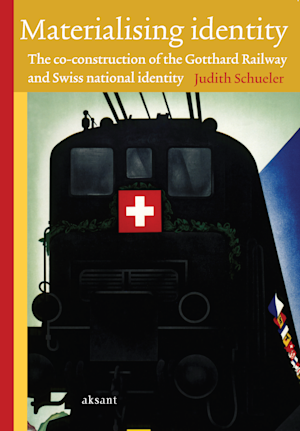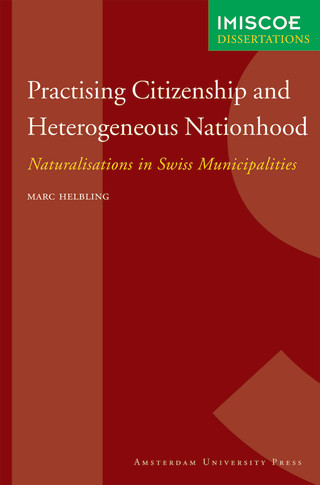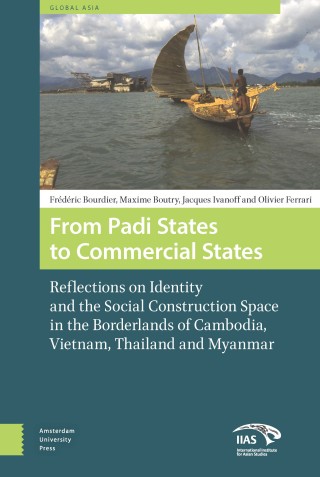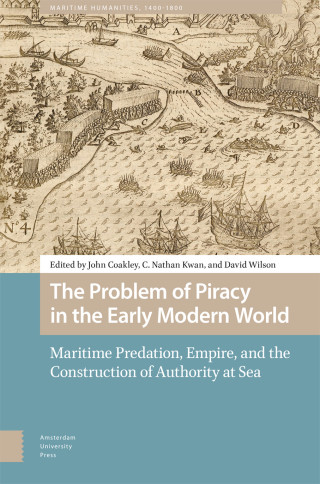
Vanaf 1 oktober worden Engelstalige AUP-boeken uitgegeven door Taylor & Francis. Meer informatie: AUP en Taylor & Francis werken samen aan Engelstalig boekenprogramma
Judith Schueler
Materialising identity
The co-construction of the Gotthard Railway and Swiss national identity
Since its opening in 1882, the Gotthard Railway with its 15-kilometer long tunnel under the Gotthard Mountains, provides a crucial international link through the Swiss Alps, between North-Western Europe and Italy. In contrast to many other railway lines, its symbolic meaning has never sunk into oblivion. In Swiss society today, references to the Gotthard myth are multifaceted and omnipresent. Not only do they evoke images of a technological railway project, they also allude to Swiss history, alpine nature and national identity. Reading this book assists in understanding the old and contemporary discussions about the future of the Gotthard Railway, the regions in which it lies and the Swiss national identity.
Curiosity-driven, this research combines viewpoints from the history of technology, cultural studies and cultural geography to grasp the intensity of the Gotthard as a national Swiss image. Whereas the relationship between the Gotthard Mountains and the Swiss national identity has received ample scholarly attention, the role of the Gotthard Railway remains largely unexplored.
To illustrate to what extent historical actors co-constructed the railway and Swiss identity, the empirical chapters start with an analysis of an engineering discussion about tunneling methods. Hereafter, the book examines the reactions in Switzerland to the inauguration of the railway line. Subsequently, it describes the appreciation of the railway line portrayed in travel guides of the belle époque. The last chapter captures the glory days of the Gotthard myth, before and during the Second World War, with a focus on the novels and plays, in which the Gotthard Tunnel construction occurs. This historical overview offers insight into the multiple roles that technology plays in the construction of a sense of national identity as well as illustrating how identity has an effect on the appropriation of a technological railway project.
Curiosity-driven, this research combines viewpoints from the history of technology, cultural studies and cultural geography to grasp the intensity of the Gotthard as a national Swiss image. Whereas the relationship between the Gotthard Mountains and the Swiss national identity has received ample scholarly attention, the role of the Gotthard Railway remains largely unexplored.
To illustrate to what extent historical actors co-constructed the railway and Swiss identity, the empirical chapters start with an analysis of an engineering discussion about tunneling methods. Hereafter, the book examines the reactions in Switzerland to the inauguration of the railway line. Subsequently, it describes the appreciation of the railway line portrayed in travel guides of the belle époque. The last chapter captures the glory days of the Gotthard myth, before and during the Second World War, with a focus on the novels and plays, in which the Gotthard Tunnel construction occurs. This historical overview offers insight into the multiple roles that technology plays in the construction of a sense of national identity as well as illustrating how identity has an effect on the appropriation of a technological railway project.
Auteur
- Titel
- Materialising identity
- Subtitel
- The co-construction of the Gotthard Railway and Swiss national identity
- Auteur
- Judith Schueler
- Prijs
- € 54,99
- ISBN
- 9789048521166
- Uitvoering
- eBook PDF (Adobe DRM)
- Aantal pagina's
- 197
- Taal
- Engels
- Publicatiedatum
- 01 - 03 - 2009
- Afmetingen
- 16.9 x 24.1 cm
- Serie
- Technology and European History Series
- Discipline
- History, Art History, and Archaeology
Materialising identity - 2
Acknowledgments - 6
Table of contents - 8
Introduction The Gotthard as a national image - 10
Chapter 1 National building practices at stake - 36
Chapter 2 Celebrating the Gotthard Railway - 60
Chapter 3 Travelling the Gotthard - 84
Chapter 4 Re-writing history - 116
Conclusion - 140
Epilogue - 152
Endnotes - 158
Bibliography - 186
Summary - 196
Gerelateerde boeken

Across the Three Pagodas Pass
Peter Davies (red.)

Practising Citizenship and Heterogeneous Nationhood
Marc Helbling

From Padi States to Commercial States
Maxime Boutry, Jacques Ivanoff, Frédéric Bourdier, Olivier Ferrari

The Problem of Piracy in the Early Modern World
John Coakley, Nathan Kwan, David Wilson (red.)
